Special Feature: Products Sally Recommends
Visiting Chateauneuf-du-Pape--Part Un
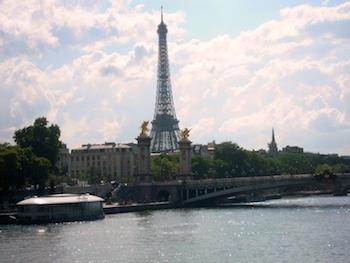 When presented with my wife Cathy’s request that we attend a destination wedding in Avignon, France this summer, I responded with a tentative “OK..” I knew that an affirmative response was mandatory, so why rock the boat unnecessarily? After all, it was foreign travel, in which she is not-so-inclined to participate on any other occasion, due to the restraints of her real estate profession and fears of leaving our dog with anyone other than me. It would mean that we would fly into Paris, my favorite foreign city, and stay there for a few days while we acclimated to the time change. And, that was another positive aspect. After some investigating, I found that Avignon was only about 20 kilometers away from Chateauneuf-du-Pape, the most heralded vineyard and winery community of the Southern Rhone region of the country. Noteworthy vineyards had been planted here since 1316, when Pope John XXII, originally a local to the area, directed that these should serve the needs of his papacy. The outlook was getting better and better. After some research on the highest rated wines of 2010 (banner year for the region), I found several proprietors who welcomed my visit. As a bonus, my wife agreed to join me on my planned journey, during the day of the wedding’s Rehearsal Dinner.
When presented with my wife Cathy’s request that we attend a destination wedding in Avignon, France this summer, I responded with a tentative “OK..” I knew that an affirmative response was mandatory, so why rock the boat unnecessarily? After all, it was foreign travel, in which she is not-so-inclined to participate on any other occasion, due to the restraints of her real estate profession and fears of leaving our dog with anyone other than me. It would mean that we would fly into Paris, my favorite foreign city, and stay there for a few days while we acclimated to the time change. And, that was another positive aspect. After some investigating, I found that Avignon was only about 20 kilometers away from Chateauneuf-du-Pape, the most heralded vineyard and winery community of the Southern Rhone region of the country. Noteworthy vineyards had been planted here since 1316, when Pope John XXII, originally a local to the area, directed that these should serve the needs of his papacy. The outlook was getting better and better. After some research on the highest rated wines of 2010 (banner year for the region), I found several proprietors who welcomed my visit. As a bonus, my wife agreed to join me on my planned journey, during the day of the wedding’s Rehearsal Dinner.
With the steep cost of car rentals out of the TGV train station in Avignon (our point of arrival), I decided to rent a vehicle for one day and then return to the hotel by taxi, following our wine touring. Planning the adventure came together nicely, since I started very early. Twas a pity it did not actually transpire as smoothly as I envisioned.
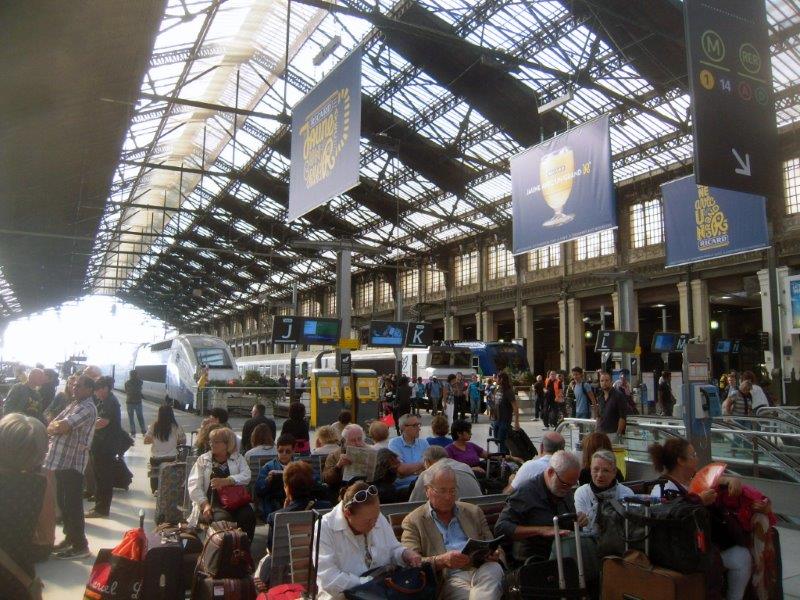 Paris was very nice, but so very crowded with vacationing people from all over the globe. The Tour de France bicycle race had just concluded the day before we landed, so it is easy to imagine the havoc that played. I had vowed to visit the Catacombs this trip, but faced with a 5 hour plus line and the possibility of being turned away by the time we made it to the entrance, I opted out. Possibly on another wintertime trip. The “bullet train” to Avignon, out of Gare de Lyon in Paris was a pleasant surprise. Their system of traversing the country by rail is impressive, and the first class rail cars were plush and relaxing. The hotel for the wedding was La Mirande, the fanciest spot in the town, adjacent to the Palais des Papes, the Papal residence during the 11th and 12th centuries. And the price for a room in that establishment… “don’t ask.”
Paris was very nice, but so very crowded with vacationing people from all over the globe. The Tour de France bicycle race had just concluded the day before we landed, so it is easy to imagine the havoc that played. I had vowed to visit the Catacombs this trip, but faced with a 5 hour plus line and the possibility of being turned away by the time we made it to the entrance, I opted out. Possibly on another wintertime trip. The “bullet train” to Avignon, out of Gare de Lyon in Paris was a pleasant surprise. Their system of traversing the country by rail is impressive, and the first class rail cars were plush and relaxing. The hotel for the wedding was La Mirande, the fanciest spot in the town, adjacent to the Palais des Papes, the Papal residence during the 11th and 12th centuries. And the price for a room in that establishment… “don’t ask.”
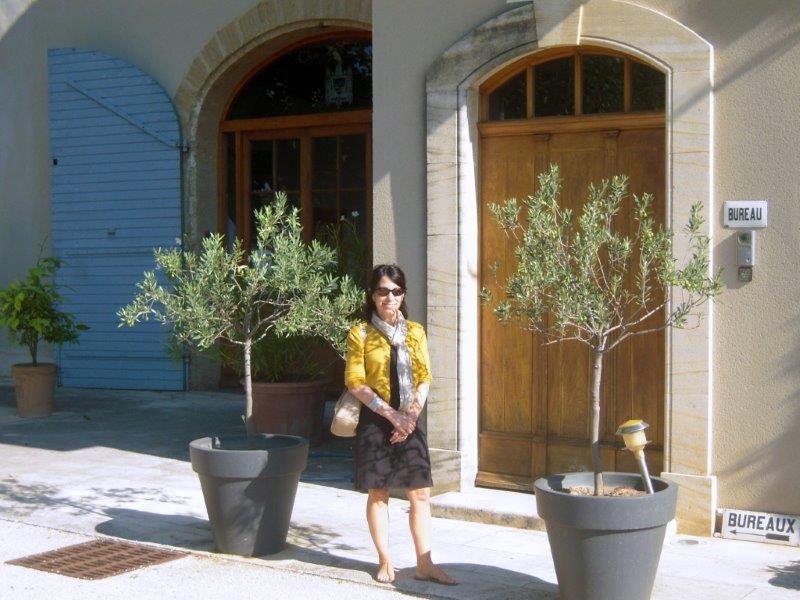 Still feeling some of the effects of the jet-lag, we were up early on the appointed morning of Friday, August 1st, for our wine adventure in Provence. Ms. Garmin was activated and the route was charted. We were in the immediate vicinity of Domaine du Pegau within 20 minutes of departure. What I could not have anticipated was the summer vacation festival which was planned in the heart of the town that day, extremely close to the office of the winery. There were police diverting traffic away from this area, as the streets were being blocked off for the planned festivities. No officer had the patience or language diversity to offer any alternative way to our destination. Ms. G was programmed with “Detours” but none offered the kind of alternative which would have been required. After 45 minutes of futility, I surrendered and diverted to another location which was accessible, Clos des Papes. My wine traveling buddy Dave had recommended this spot, based on his positive experience there, ten years prior. An appointment was not required, but the “Accuel” (reception) office was locked with a buzzer to push for assistance. After pressing the button twice, a sleepy female voice came over the speaker and asked what I wanted. I responded that I was there for a visit and tasting. Anna told me to wait and she would come to let me inside. After a few minutes the door was unlocked and we entered. I asked if any Avril (family name of the owners) was available. Her answer was “No,” with nary an explanation. At that point she offered tastes of the 2012 and 2011 vintages of the Clos des Papes “vin rouge.” I accepted.
Still feeling some of the effects of the jet-lag, we were up early on the appointed morning of Friday, August 1st, for our wine adventure in Provence. Ms. Garmin was activated and the route was charted. We were in the immediate vicinity of Domaine du Pegau within 20 minutes of departure. What I could not have anticipated was the summer vacation festival which was planned in the heart of the town that day, extremely close to the office of the winery. There were police diverting traffic away from this area, as the streets were being blocked off for the planned festivities. No officer had the patience or language diversity to offer any alternative way to our destination. Ms. G was programmed with “Detours” but none offered the kind of alternative which would have been required. After 45 minutes of futility, I surrendered and diverted to another location which was accessible, Clos des Papes. My wine traveling buddy Dave had recommended this spot, based on his positive experience there, ten years prior. An appointment was not required, but the “Accuel” (reception) office was locked with a buzzer to push for assistance. After pressing the button twice, a sleepy female voice came over the speaker and asked what I wanted. I responded that I was there for a visit and tasting. Anna told me to wait and she would come to let me inside. After a few minutes the door was unlocked and we entered. I asked if any Avril (family name of the owners) was available. Her answer was “No,” with nary an explanation. At that point she offered tastes of the 2012 and 2011 vintages of the Clos des Papes “vin rouge.” I accepted.
The Clos des Papes estate (family owned since 1600) includes nearly forty hectares under vine, scattered about the nearby community. Some of these vineyards are adjacent to the winery facility. Most of the wine they produce is red (94%) with blends of primarily Grenache (65%), Mourvedre (20%), Syrah (10%) and smaller amounts of Counoise, Vaccarese and Muscardin. The reds are matured for 12 to 15 months in oak barrels and “fined” (filtered) with egg whites, as are most of the wines in this appellation. Not very much more information was offered, so we moved along to our next scheduled stop, the famous Chateau Beaucastel.
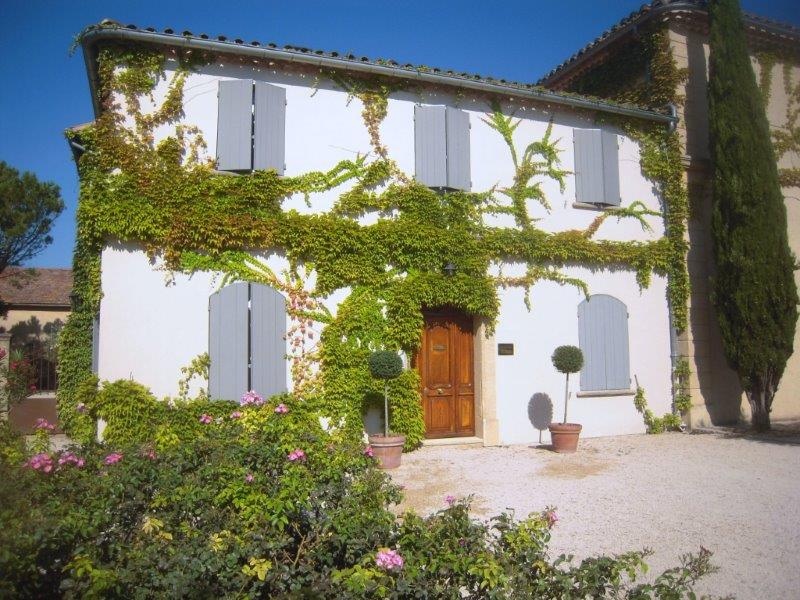 Our appointment here was for 10:30 am. After the very brief encounter at our first stop, we were early. So we sat in the reception room, awaiting our host. Time passed, as did our appointment time. We were not acknowledged until thirty minutes past our appointment, because a French buyer had been in discussions with our host Sarah, and she opted to cater to his inconsiderate lingering, rather than honor her long booked commitment to this lowly wine writer. That just did not set well with me, especially following the first interruption of the early morning.
Our appointment here was for 10:30 am. After the very brief encounter at our first stop, we were early. So we sat in the reception room, awaiting our host. Time passed, as did our appointment time. We were not acknowledged until thirty minutes past our appointment, because a French buyer had been in discussions with our host Sarah, and she opted to cater to his inconsiderate lingering, rather than honor her long booked commitment to this lowly wine writer. That just did not set well with me, especially following the first interruption of the early morning.
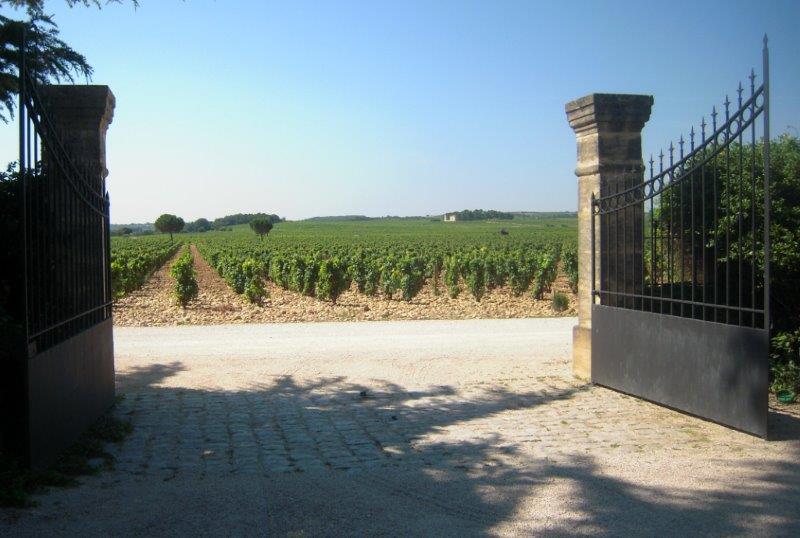 The vineyards of Beaucastel were originally farmland, owned by Pierre de Beaucastel, back in the mid-1500’s. By 1792, there were records of the property being planted as vineyards. In 1886 the Phylloxera epidemic hit the region and the vineyards were in ruin. Sarah claimed that Beaucastel property was the first hit by the blight in all of France, yet books I have read on the subject have never pinpointed “ground zero,” but indicate its origins to be in the neighboring province of Languedoc. By 1909 the property was sold to the Perrin family whose heirs are its current day owners. Today, there are 6 wines produced on this estate, four are Chateauneuf-du-Pape and two are from the adjoining appellation of Cotes du Rhone. Annual production for the winery is around two hundred thousand bottles.
The vineyards of Beaucastel were originally farmland, owned by Pierre de Beaucastel, back in the mid-1500’s. By 1792, there were records of the property being planted as vineyards. In 1886 the Phylloxera epidemic hit the region and the vineyards were in ruin. Sarah claimed that Beaucastel property was the first hit by the blight in all of France, yet books I have read on the subject have never pinpointed “ground zero,” but indicate its origins to be in the neighboring province of Languedoc. By 1909 the property was sold to the Perrin family whose heirs are its current day owners. Today, there are 6 wines produced on this estate, four are Chateauneuf-du-Pape and two are from the adjoining appellation of Cotes du Rhone. Annual production for the winery is around two hundred thousand bottles.
We toured the cellars, where the wine is produced and stored. Most impressive was the method of bottled storage. Bottles are hand stacked from floor to ceiling in various chambers of the caves, very similar to the methods I witnessed at the Schramsberg winery in Napa. We tasted one of the Cotes du Rhone reds (unimpressive) and the 2011 and 2008 Chateau du Beaucastel vintages. Both have Mourvedre as the dominant wine of a blend (different from most others producers who stick with Grenache as the major component), utilizing 13 different grape varieties. To my palate, both were light, delicate and mellow expressions of dark fruit, but not as compelling as those sampled in our first tasting. The premier Hommage a Jacques Perrin was not offered.
Departing the grounds of this place late, I was very nervous about how it would affect the balance of the day’s events. And sadly, it did. Yet the wine discoveries made were memorable. Look for the second part of this saga, which should be posted very soon.
La Mirande - www.la-mirande.fr
Palais des Papes - www.palais-des-papes.com
Domaine du Pegau - www.pegau.com
Clos des Papes – www.clos-des-papes.fr
Chateau Beaucastel – www.beaucastel.com
Note: This information was accurate when it was published. Please be sure to confirm all rates and details directly with the businesses in question before making your plans.



